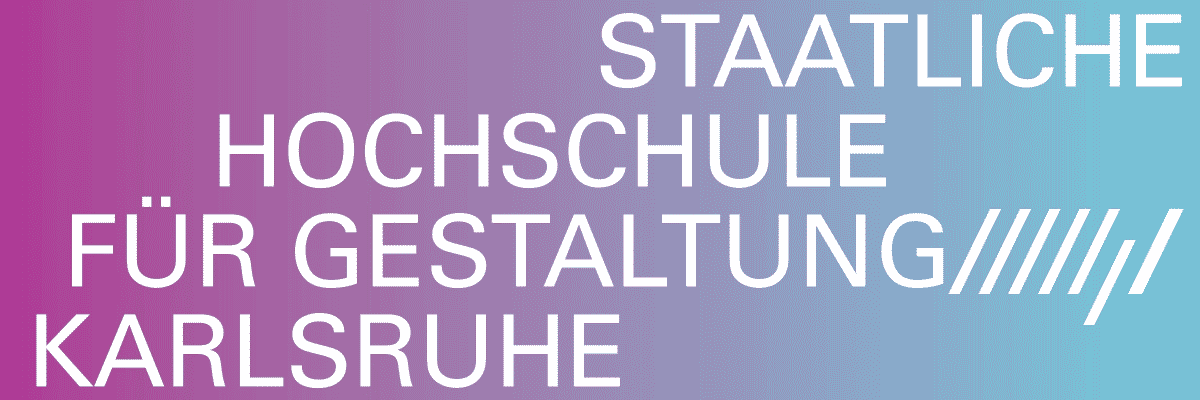
Katalin Kortmann Járay & Karina Mendreczky
The long sigh of the Frog
Project Info
- 💙 am projects
- 💚 Tímea Fülöp
- 🖤 Katalin Kortmann Járay & Karina Mendreczky
- 💜 Tímea Fülöp
- 💛 Mátyás Gyuricza, Péter Drapkó
Share on
Advertisement



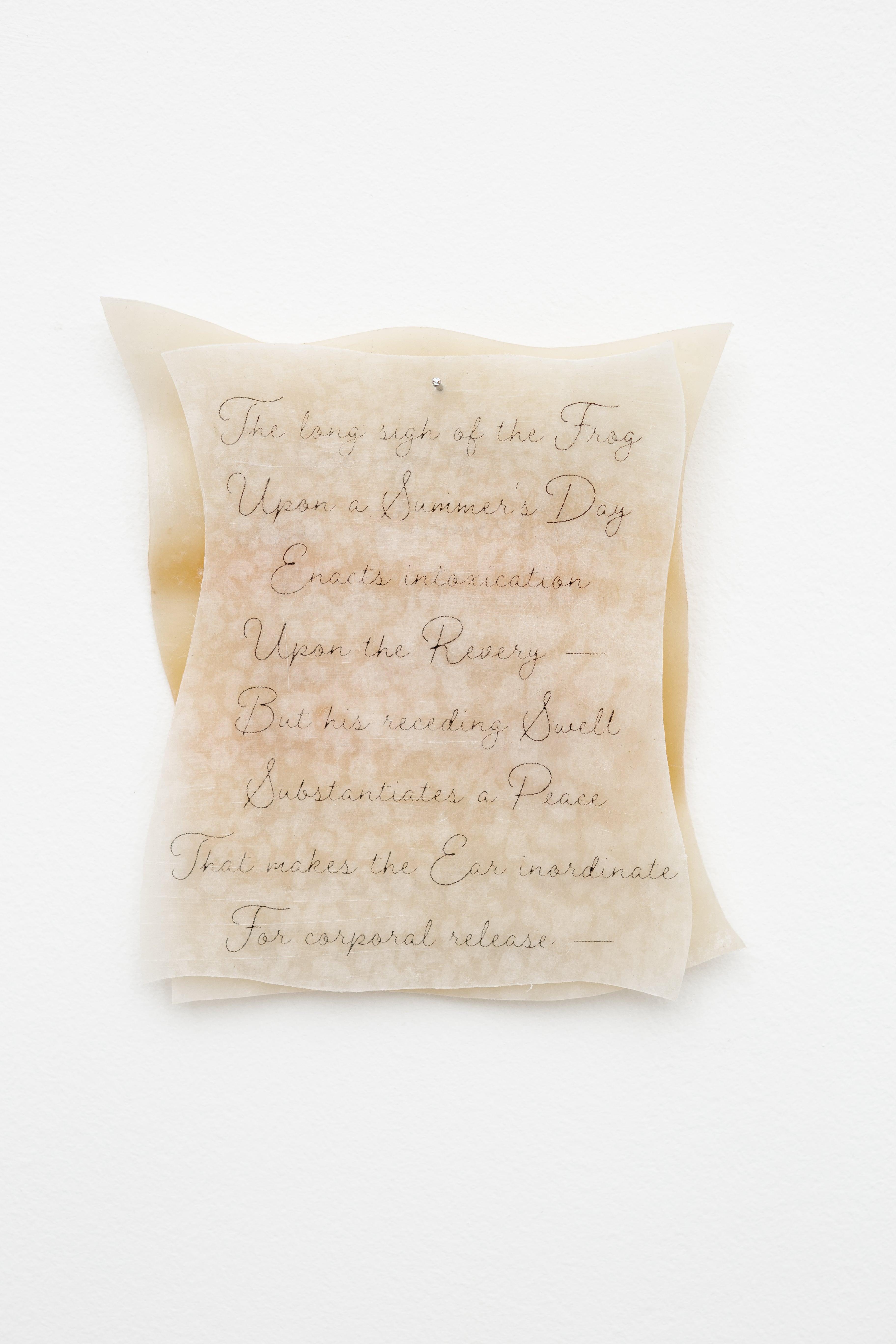
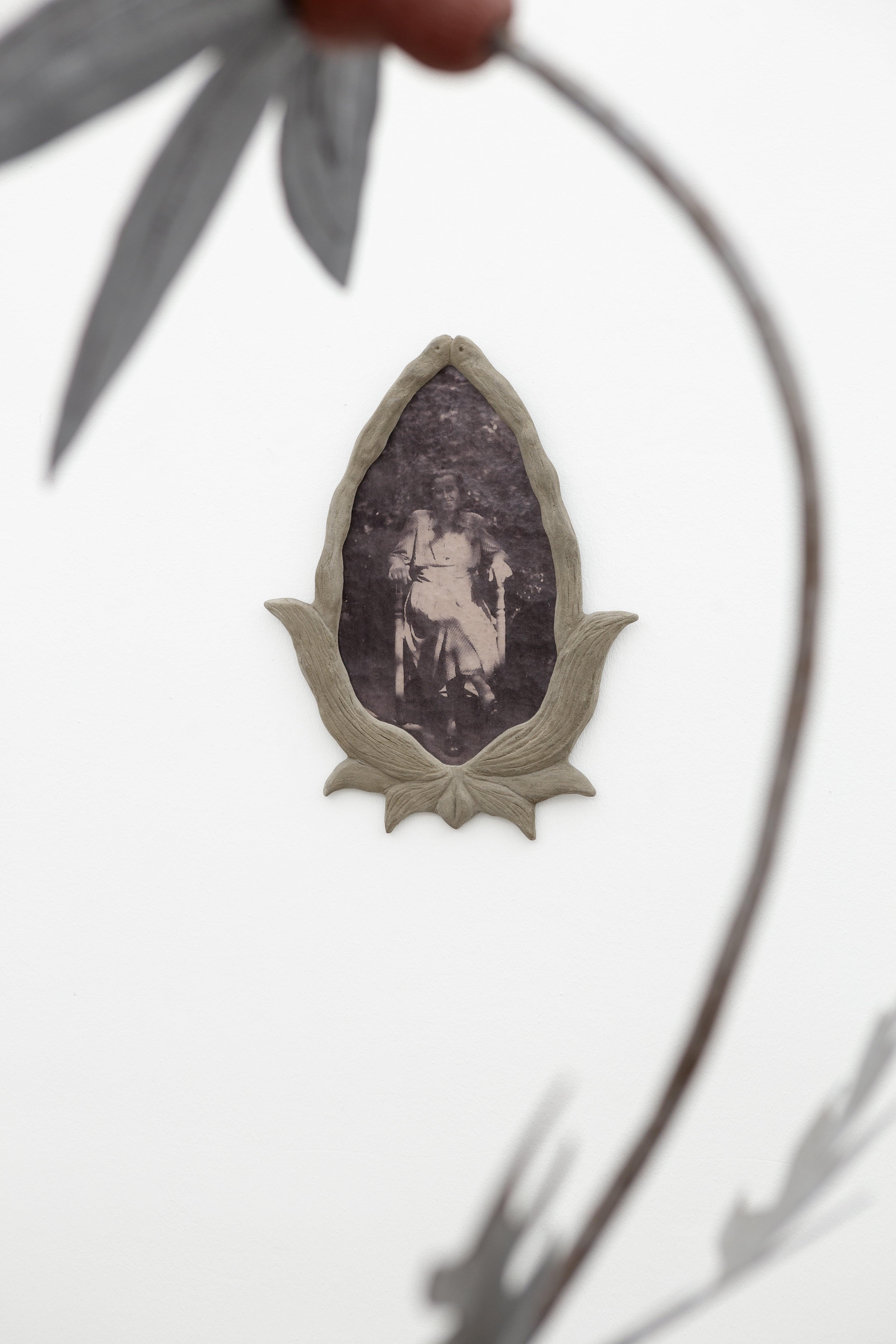
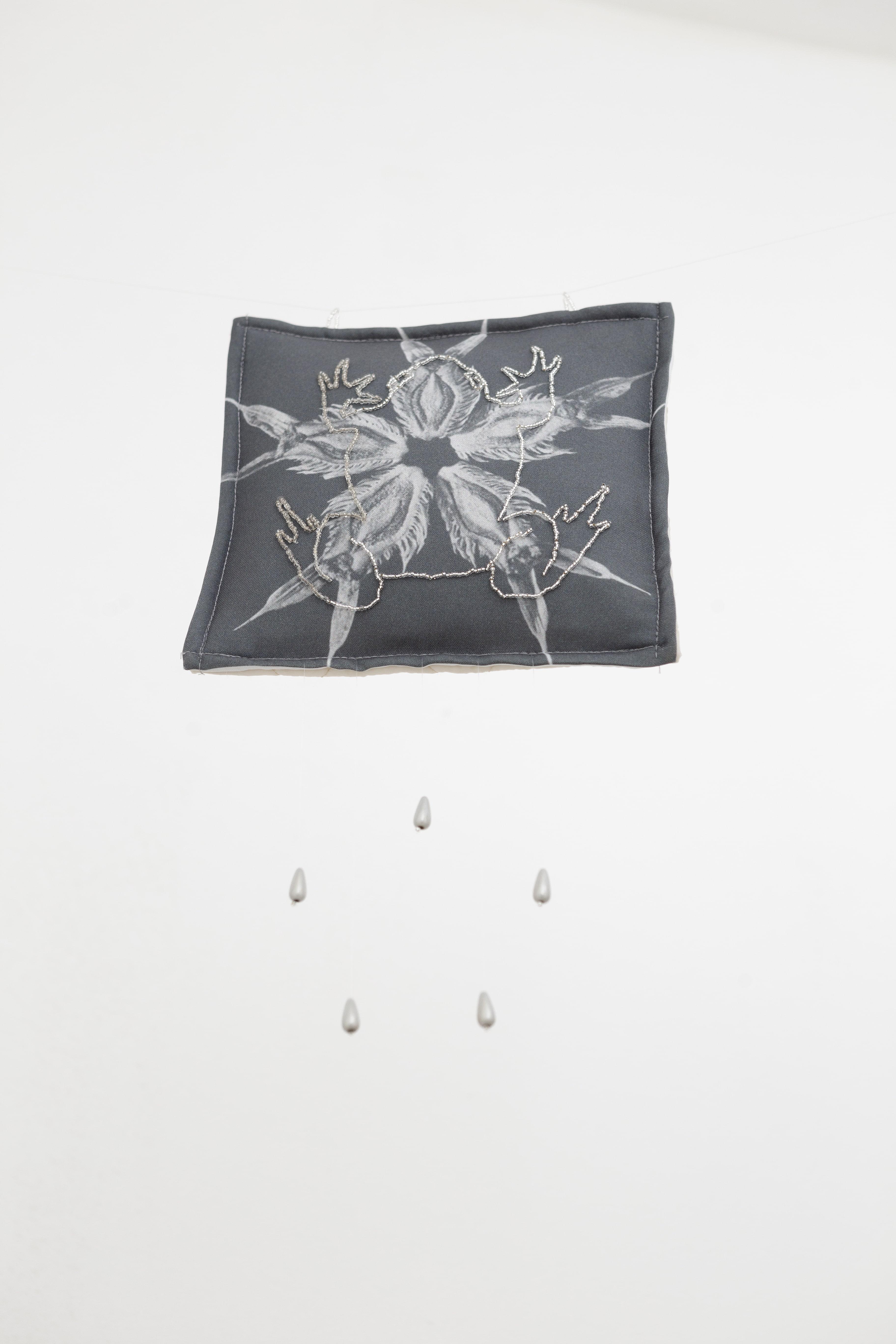
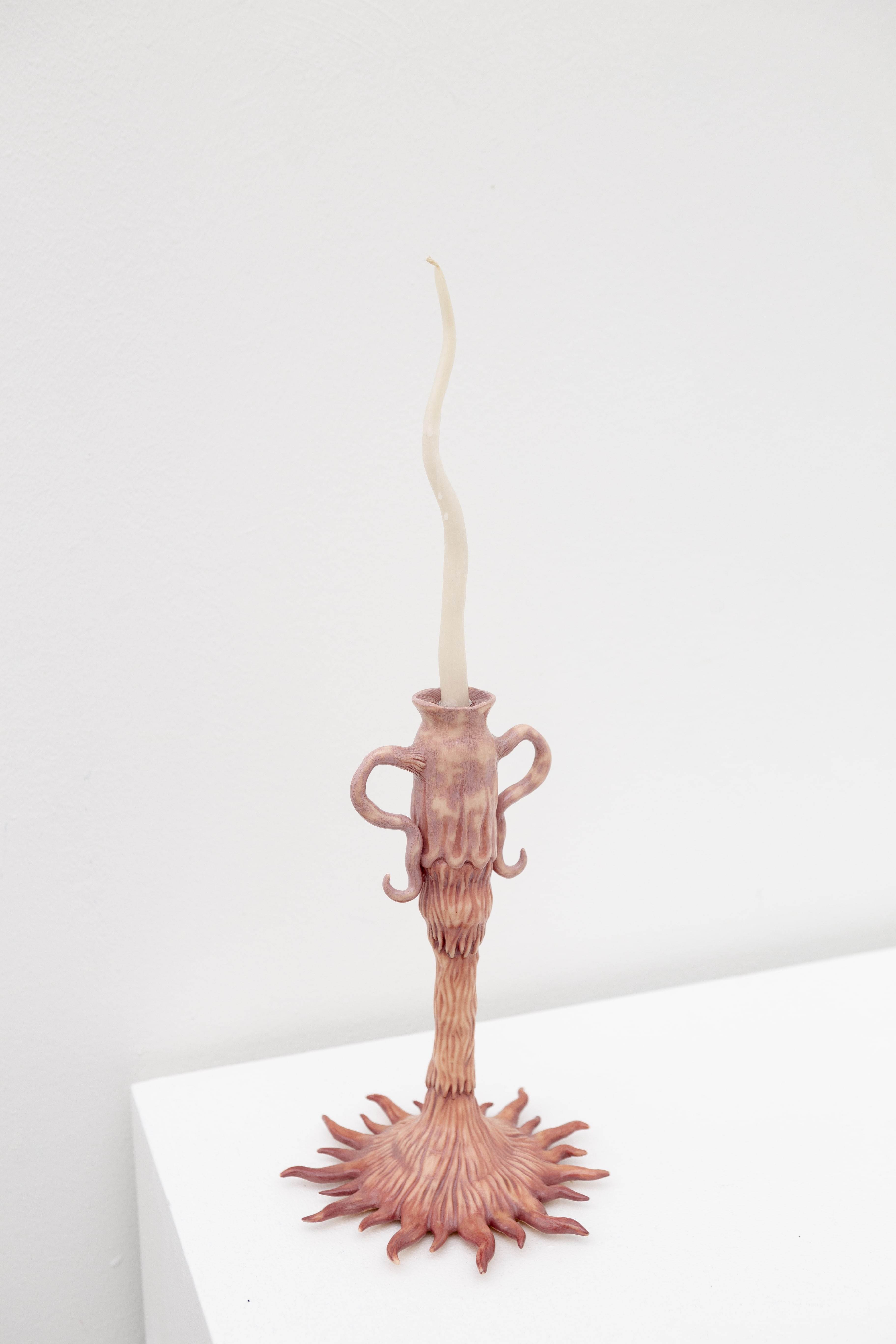
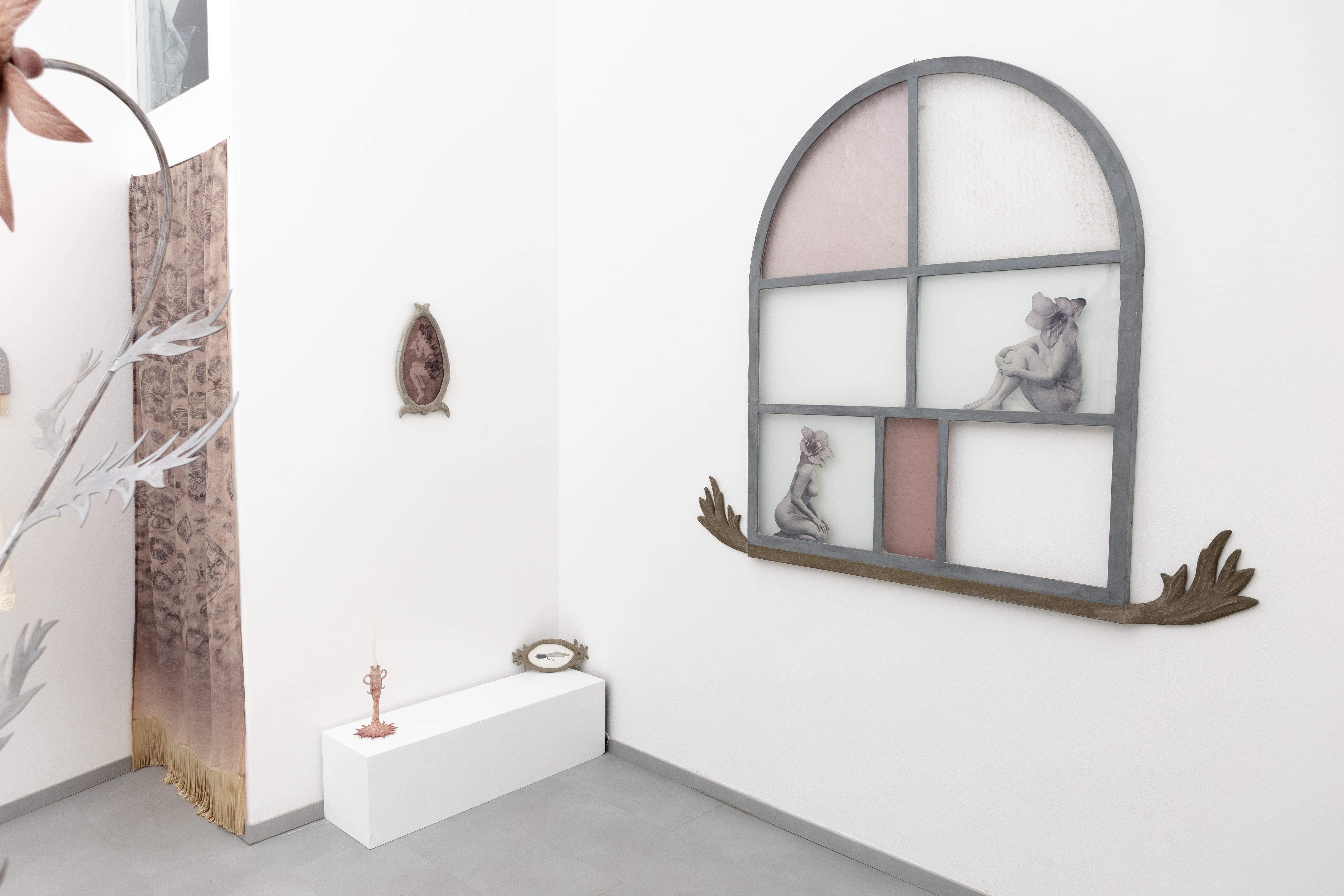

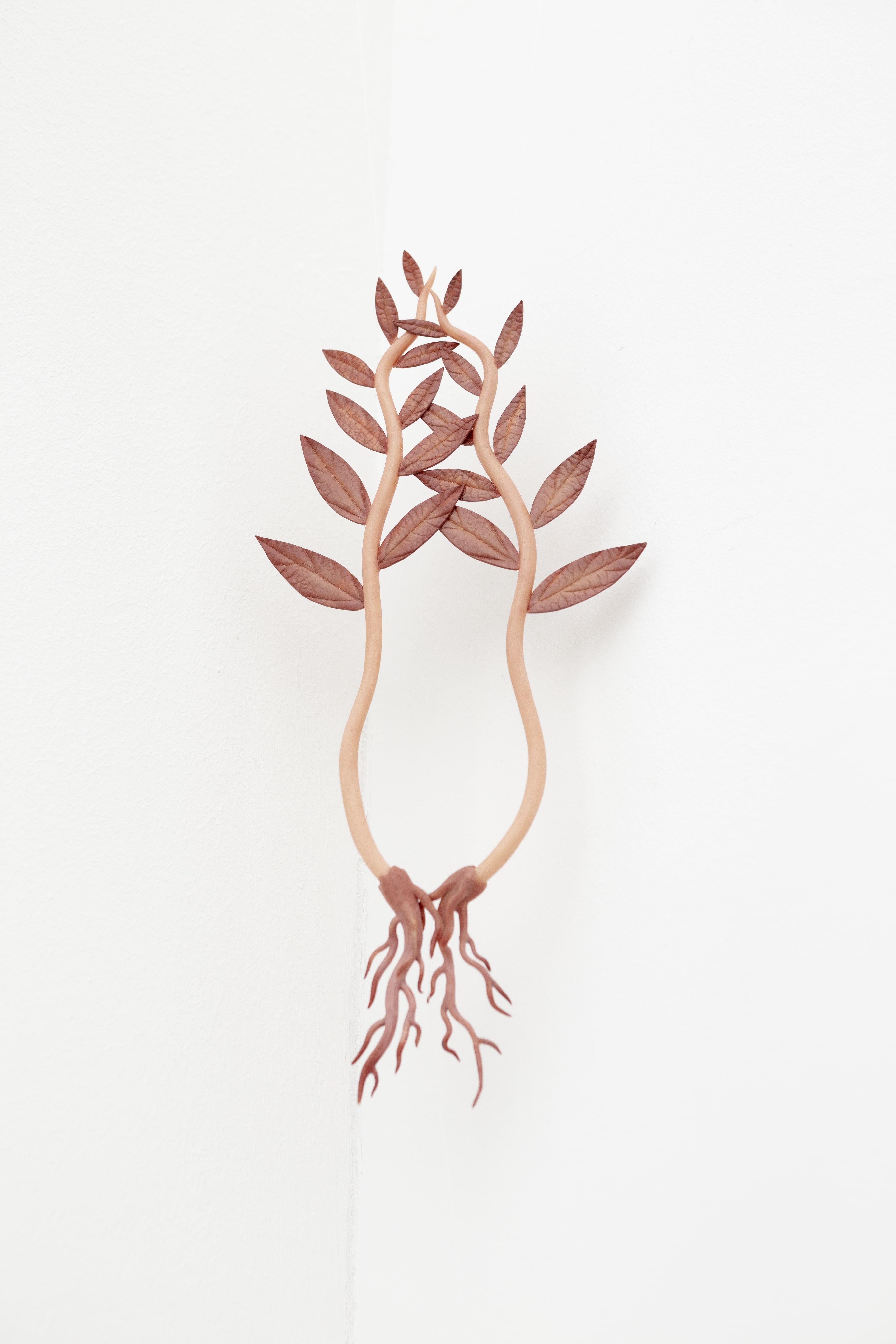
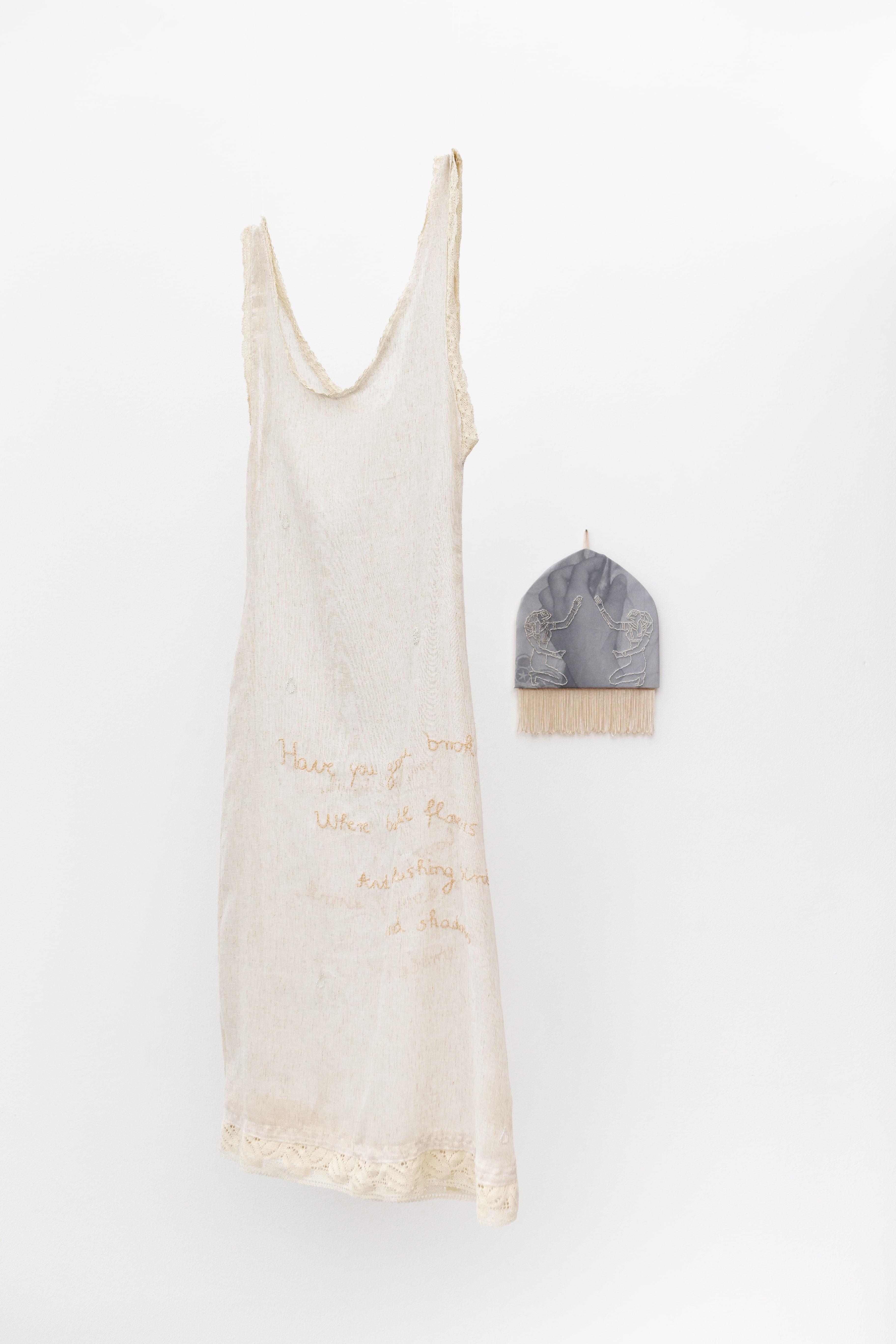
Emily Dickinson: The long sigh of the Frog
The long sigh of the Frog
Upon a Summer's Day
Enacts intoxication
Upon the Revery —
But his receding Swell
Substantiates a Peace
That makes the Ear inordinate
For corporal release —
c. 1876
Emily Dickinson was considered an oddity in her life, as she spent most of her days confined to her bedroom: deliberately choosing solitude, escaping expectations. But her solitude did not mean that her emotional life was poor: her poems, published after her death, show that she was very interested in her own fragility and mortality, and that she sought in solitude and nature a solace that she could not find in the company of others.
The joint exhibition by Katalin Kortmann Járay and Karina Mendreczky goes beyond poetry, and is inspired by Dickinson's writings that have never been published in their original form. Her private correspondence, partly censored and partly destroyed, suggests that the love of her life was her brother's wife.
The pair have sought to capture a particular feminine melancholy in the figure of Dickinson and in the symbol of the frog, known for its vulnerability and environmental indicativeness. In Egyptian culture, the frog is also associated with motherhood, as Heket, the goddess responsible for fetuses and childbirth, appears with the head of a frog.
The explanation for the chosen solitude is the incomprehensibility, the otherness, the spiritual pain that slowly becomes corporeal. The exhibition, rich in Sapphic allusions, transforms the gallery space into an interior space, where the rejection of womanhood and the expectations placed upon it, and all that Dickinson turned to instead of marriage and motherhood can become embodied: her garden, her flowers, nature.
The artist duo Katalin Kortmann Járay (1986, Budapest) and Karina Mendreczky (1988, Budapest) have been working closely together since 2019, creating large-scale, accessible installations from a spatial collage of different elements.
Their collaborative works combine different techniques and materials to create metaphorically feminine spaces, typically incorporating textiles, photographs and sculptures made of iron, clay or porcelain.
Their conceptual starting point is usually a well-known text, whether it be a poem, a nursery rhyme or a song lyric, so they play with our collective memory by evoking new meanings. With an animistic approach, they create stories that combine the symbolism of fairy tales, quasi-religious motifs and mysticism.
Tímea Fülöp
